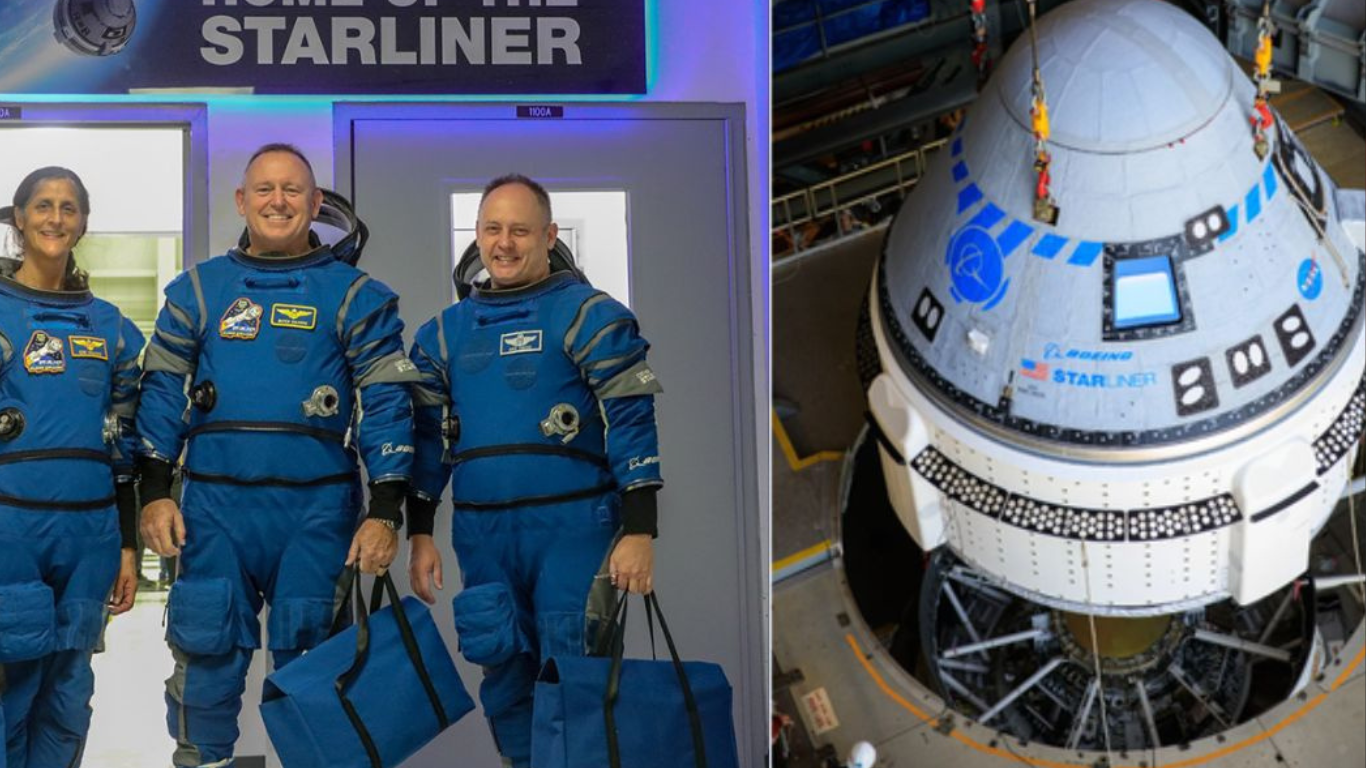Boeing Set to Fly to Space
Countdown to Launch: NASA Astronauts Prepare for Historic Journey
Tonight marks a potentially historic moment in space exploration as two experienced NASA astronauts, Butch Wilmore and Suni Williams, prepare to embark on a mission aboard a spacecraft that has not previously carried humans.
Boeing's CST-100 Starliner capsule, set to launch atop a United Launch Alliance Atlas V rocket from Space Launch Complex 41 at Cape Canaveral Space Force Station, will transport them to the International Space Station (ISS).
Boeing's new Starliner capsule set for first crewed flight to space station https://t.co/k9B5JY3Gfb pic.twitter.com/EXXyJGvkrr
— Reuters (@Reuters) May 6, 2024
Source: Twitter/Reuters
Thorough Testing and Preparation: The Crew Flight Test Mission
Describing the mission as a test flight, NASA Administrator Bill Nelson emphasized the thorough examination of various systems, including life support and manual control. With two experienced test pilots, Butch and Suni, on board, NASA aims to ensure the meticulous testing of all aspects of the spacecraft.
The astronauts, accompanied by 750 pounds of supplies, are expected to reach the space station early Wednesday, marking the beginning of an eight-day mission before potentially returning home as early as May 15.
Delays and Challenges: Journey to Launch
Both astronauts, retired Navy personnel, have previously completed two space missions each, utilizing both the space shuttle and Russia's Soyuz spacecraft for travel to and from the ISS.
Despite initial liftoff dates in 2023, delays due to hardware issues pushed the launch to 2024. Reflecting on their journey, Wilmore described the extensive process they have undergone, expressing excitement about the thrilling experience of being Navy-trained test pilots involved in the inaugural flight.
Launch Readiness and Weather Forecasts
Following the successful conclusion of the Launch Readiness Review last week, all teams gave their approval for the mission, and the Atlas V rocket was transported to the launch pad.
Weather forecasts indicate a 95% chance of favorable conditions for launch, with backup opportunities available on Tuesday, Friday, and Saturday.
Starliner marks a significant milestone as only the sixth U.S.-based spacecraft to carry NASA astronauts, following Mercury, Gemini, Apollo, the space shuttle, and SpaceX's Crew Dragon.
Additionally, it signifies the return of crewed launches from Cape Canaveral's launch pads, which last hosted a crewed flight in 1968 with Apollo 7.
Reflections on Space Capsules and Human Spaceflight
Starliner's planned land touchdown distinguishes it from previous U.S.-based capsules, such as Crew Dragon, Apollo, Gemini, and Mercury, which all made water landings.
Reflecting on his experience aboard Starliner, NASA's Bob Hines emphasized the unique sensation of floating inside the spacecraft upon entry, providing valuable insights as a test pilot into the diverse approaches to human spaceflight.
The Road Ahead: Operational Missions and Beyond
If the Crew Flight Test (CFT) is successful, the subsequent operational mission, known as Starliner-1, could launch as early as next February, marking the beginning of six Boeing missions responsible for transporting astronauts to and from the station, alongside SpaceX, until the ISS's planned decommissioning after 2030.
Read more such news on techinsighttoday
Thank you so much for reading

